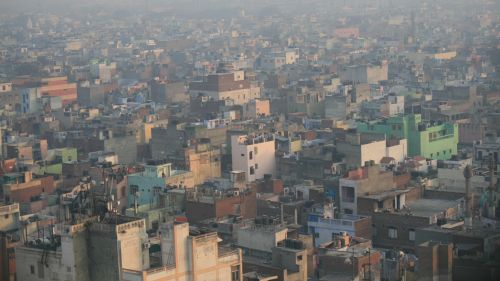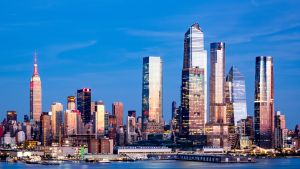The Urban Century of China and India

Xuefei Ren argues that cities in China and India are more aptly compared in territorial vs. associational governance than by regime type.
With their similar population size and fast-track growth, cities in China and India are frequently compared. Commentators often attribute the differences between Chinese and Indian cities to regime type, such as democracy vs. authoritarianism. While political regimes powerfully shape societies, they only offer a partial explanation. For a deeper understanding of why cities in China and India work the way they do, and their global implications, one must cast a broader lens.
Territorial vs. Associational Governance
Beyond regime types, one major distinction between Chinese and Indian cities is the territorial logic of urban governance in China and the associational logic of urban governance in India. Urban policymaking and implementation in China are strongly shaped by a thick layer of territorial institutions, such as the hukou system and the cadre evaluation system for promoting city officials. These are “territorial” institutions because they unevenly distribute rights, benefits, resources, and rewards according to localities and jurisdictions. For example, the hukou system links a citizen’s welfare entitlement to the physical locality where the person is registered; China’s cadre evaluation system is a territory-based reward method, as it promotes and punishes local officials based on their performance within their jurisdictions.
Indian cities lack strong territorial institutions. Urban policymaking depends on a dense web of networks and alliances among the state, the private sector, and civil society groups. Urban affairs are domains of state governments, and municipal institutions are often minor players in policymaking. The execution of urban programs—in housing, land, transportation, and environment—is contingent upon coalition-building among stakeholders. This arrangement presents a fluid “associational” form of urban governance.
Air Pollution
The ways China and India tackle their air pollution further illustrate the difference between the territorial and associational approaches to urban governance.
The key actors in China’s clean air campaigns are municipal governments. Following the central government’s mandates, cities draft detailed action plans and allocate generous funding for implementation. The central government exerts strong pressure on city officials, whose promotion is closely tied to their record in air pollution control. Local officials are strongly incentivized to cut air pollution in their jurisdictions, but they are less motivated to collaborate with other city regions in China to tackle air pollution because such efforts in collaboration are not rewarded in their annual reviews.
In Indian cities, the key actors in clean air campaigns are often environmental NGOs, which mobilize a variety of stakeholders including the Indian Supreme Court, the private sector, and different bureaucracies of the state to achieve their agenda. Municipal governments play a minor role. Most Indian cities don’t have official action plans, and few have allocated sufficient funding.
Responses to COVID-19
The local responses to COVID-19 in China and India also reflect the territorial vs. associational approaches to urban governance. Although there are huge variations within each country and it’s hard to generalize, some larger patterns nevertheless emerge.
Chinese cities, especially those in the north, quickly resorted to lockdowns, mass-testing, and neighborhood surveillance to eliminate new outbreaks. All these measures are “territorial” as they target specific localities, and their implementation was orchestrated by local territorial authorities, such as district governments, street offices (jiedao), and residential committees (juweihui). China has also been using big data for contact tracing. Digital surveillance should not be territorial, but the way it is implemented in China exhibits a strong territorial flavor. Every city has its own contact tracing apps, and no attempt has been made yet to share data across jurisdictions.
India also announced a strict lockdown in the early phase of the pandemic, but it does not have local territorial institutions with which to enforce lockdowns. The nationwide lockdown in the first half of 2020 triggered a migrant crisis, and it was associational alliances of NGOs, citizens, private charity groups, government agencies that patched together an emergency support system that extended some help to the struggling migrants.
Inequality
The distinct logics of urban governance have produced different forms of inequality in the two countries. In China, its territorial approach to governing cities has widened regional disparity. The gap between China’s superstar cities—Shanghai, Beijing, Shenzhen, and Guangzhou—and everywhere else is further widening in all accounts, as local officials turn inwards and focus on their respective jurisdictions. Inequality in China, therefore, has a strong spatial dimension. In India, inequality is structured both spatially and through networks. The rich and the middle class are more likely to mobilize politicians and local bureaucracies to get urban amenities. The poor are less likely to succeed, and their best chance at getting basic amenities is right before elections as politicians roll out favors to get votes.
The Belt & Road City
Understanding urban governance in China and India has far-reaching implications beyond national borders. China’s Belt Road Initiative (BRI) has produced a new generation of cities on the route of BRI. With Chinese funding, China has also exported expertise and ideas on how to govern these new cities, often modeling its domestic experience of city building. Therefore, to understand Khorgos, Hambantota, and Duisburg—the booming BRI cities—one must also look at Shenzhen, Shanghai, and Chongqing, Chinese cities that built their urban fortunes on special zoning policies, urban renewal, and rural-urban integration.
Understanding urban affairs in China and India is also instrumental for an informed view of international relations. Much of the debate on the US-China relations today focuses on the rivalry between the two countries in defense, military, and trade. Few analysts pay attention to subnational governments and city-level engagement. While mayors do not have a say on matters such as defense spending, city-level exchanges form a crucial part of US-China relations in fields ranging from public health security to climate change. An urban lens offers a more holistic view of US-China relations than the sole focus on national-level policies. The same can be said about India: the way the nation runs its cities has deep implications for its international engagement. Unless India empowers its municipal institutions, Indian cities will not be equal players on key issues such as climate change and poverty reduction. This will in turn hinder India’s multilateral engagement with other countries.
Acknowledgments
This essay was produced as part of the workshop “China's Rise and Reach: The Belt and Road City” held by the Chicago Council on Global Affairs in September 2021.
The Project is a collaboration of global leaders in international and urban affairs: the Chicago Council on Global Affairs, the University of Pennsylvania’s Perry World House, the University of Melbourne’s Connected Cities Lab, the Argentine Council for International Relations (Consejo Argentino para las Relaciones Internacionales), the Barcelona Centre for International Affairs (CIDOB), and the African Centre for Cities.
